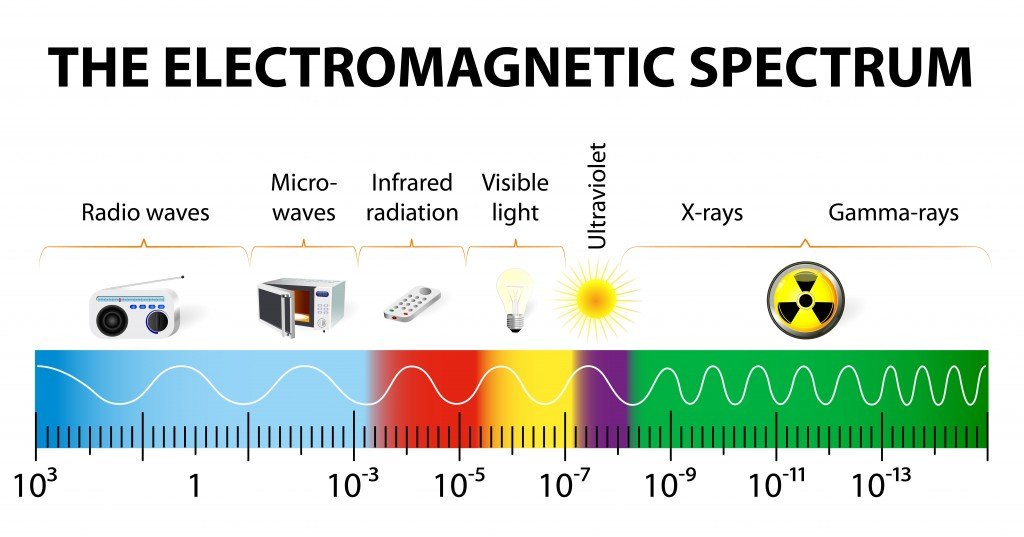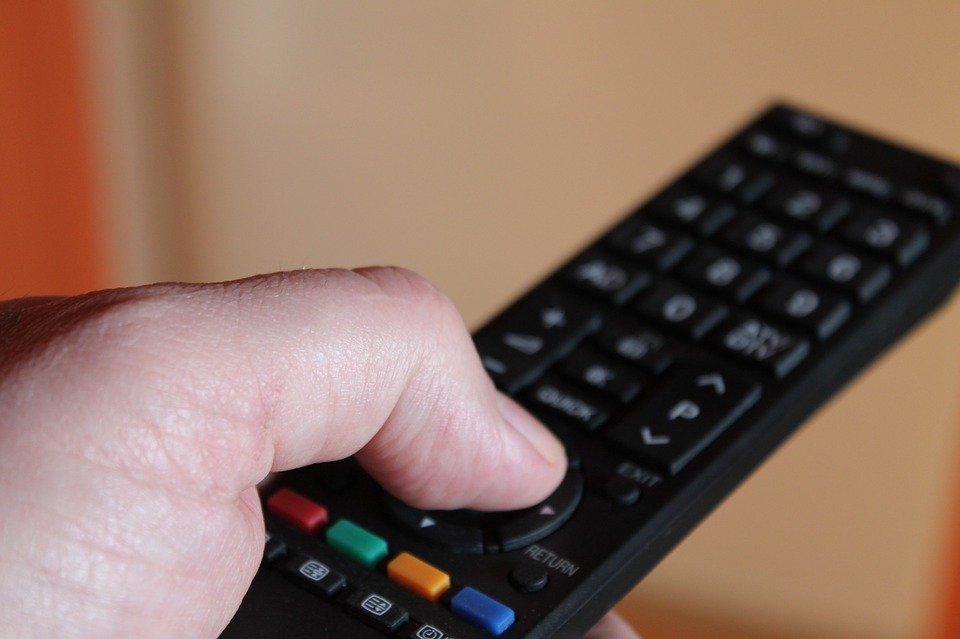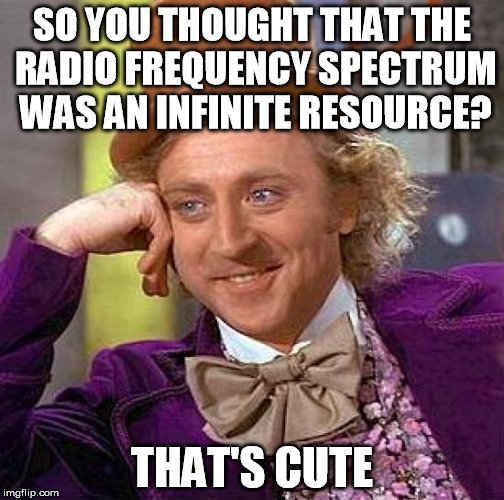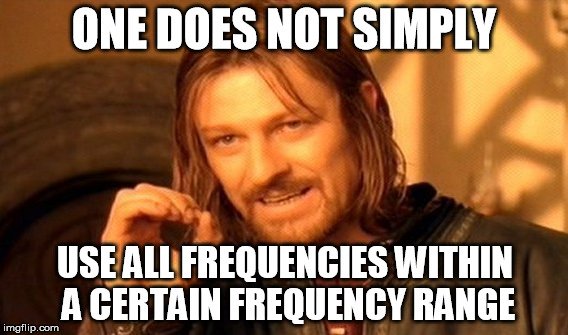Table of Contents (click to expand)
The glass is neither half-full nor half-empty. The question does not have a straightforward Yes/No answer, and your particular answer might depend upon whether you live by a ‘glass is half-full’ or ‘glass is half-empty’ approach.
You’re sitting in a swish, fine-dining restaurant, and you can’t wait to Instagram your fancy dish with a fancy name. Your post and the 20 instant likes just occupied a tiny space in the radio frequency spectrum. With the explosion of wireless technology over the past decade, could we run out of space on the radio frequency spectrum?
Short answer: Currently, not all portions of the radio frequency spectrum can be used, due to the limitations of existing technology. This question does not have a straightforward Yes/No answer, and your particular answer might depend upon whether you live by a ‘glass is half-full’ or ‘glass is half-empty’ approach.
What Is The Radio Frequency Spectrum?
Wireless communication is possible with the help of signals called radio waves. Radio waves are a part of the much larger electromagnetic spectrum. Whether you’re enjoying a quiet meditation session at home or stuck for hours in a traffic jam, the air around you is packed with millions of radio waves traveling at the speed of light, scrambling desperately to reach their destinations.

How then, do these signals not interfere with each other? Each wave has a unique identity, known as frequency. The frequency of a wave is denoted by a unit called Hertz (Hz), and it helps to calculate how far a signal can travel. Radio waves can have frequencies ranging from 3 Hz to 3000000000000 Hz (That’s 3 with 12 zeroes!). The set of frequencies within this range forms the radio frequency spectrum.
Where Do We Use Radio Waves?
Low-frequency radio signals can travel for hundreds of kilometers, which is why such signals are used mostly for aviation and military purposes. On the other hand, high-frequency signals can travel only over a few meters, and are used in short-range devices like television remotes and scanning equipment.

The frequency range from 300 KHz to 3 GHz is where things get crowded. This is a prized range, and caters to a wide variety of applications, including radio, television, cell phone signals, GPS and Wi-Fi.
For instance, consider a cell phone signal. Cell phones are equipped with transmitter and receiver antennae. Transmitters can give out radio signals, while receivers can receive radio signals of a specific frequency. When you’re talking to someone on your phone, your audio signal is converted into an electrical signal. The transmitter transmits this signal in the form of radio waves to the nearest cell phone tower. The signal travels off many cell phone towers until it is captured by the receiver antenna of the phone tuned to receive a signal of this frequency. The radio signal is converted back into an electrical signal, which in turn is converted back into audio, allowing your friend to hear you.
Whew! How much time does all of this take? Practically none. Radio waves carry information in the form of oscillating electric and magnetic fields. Frequency is a measure of the number of oscillations per second, so if your cell phone signal was transmitted at a frequency of, say 1 MHz, those radio waves are oscillating 1,000,000 times per second! Time is the reciprocal of frequency, which means that it takes only 0.01 milliseconds for your signal to travel to its destination!
Every time you make a call, tune in to the radio, bombard your WhatsApp group with ‘Good Morning’ messages, or go on a long drive with GPS to guide you, your signals are occupying a small part of the radio frequency spectrum. Now imagine billions of people doing this all over the globe!
Also Read: Do Microwaves Interfere With WiFi Signals?
The Space Crunch
As you may have already guessed, the radio frequency spectrum is a finite resource. Managing seamless communication over billions of wireless devices on such a limited frequency range is not an easy task.

Different applications have different transmission requirements. This is why the radio frequency spectrum is divided into a number of sections, or frequency bands, each band serving a different application. Military applications, radio, television, mobile signals, GPS, and satellite communications all have their own frequency bands within which they perform best.
The past decade has witnessed an exponential increase in the number of wireless devices, which means the frequencies allotted for commercial usage are rapidly filling up. An international regulatory authority known as the International Telecommunication Union (ITU), along with national authorities, ensure that there is no commercial infringement on military space, and that all players get a fair share of the spectrum pie.
How is this done? ‘Spectrum allocation’ is the word.
National authorities working under the ambit of the ITU regularly auction available frequency bands to commercial parties, like telecom companies, television channels and radio stations. The winner gets to exclusively broadcast their signals over these frequencies. However, there’s a catch. Not all frequencies within a frequency band can be utilized, and these unused frequencies are called white spaces.
Limitations Of The Radio Frequency Spectrum
If a telecom company has been allotted a certain frequency range within which it can transmit data, it cannot use all the frequencies within that range to cater to their millions of subscribers. Why?

Interference. Signals that are too closely spaced to each other run the risk of interfering in each other’s path, and if this were to happen, you would end up listening in on someone else’s conversation on your cell phone.
The same goes for radio stations. If you tune your radio to a frequency of, say, 92.7 MHz, you will hear content from a radio station that broadcasts at that signal. Tune it higher, up to about 93 MHz, and the signal gets weaker, but you start hearing faint snatches from another radio station that broadcasts at 93.5 MHz.
That is why all radio signals need to have some kind of buffer between them to avoid interference. This buffer is basically a number of frequencies that simply cannot be used, and are therefore called white spaces.
There is another limitation. As the frequencies shift towards the higher ends of the spectrum, the radio signals get weaker. This means that extremely sensitive, highly accurate and often expensive technologies are needed to detect such signals and give them enough strength to travel a sizable distance.
That brings us back to the question. Are we running out of space on the radio frequency spectrum? Yes, if you consider the number of white spaces, and the limitations of existing technology to breach the high frequency barrier.
Wireless communication has more potential applications than we can count, and the coming years will put tremendous pressure on the available regions of the radio frequency spectrum.
Also Read: How WiFi Signals Travel Through Walls?
We’re Not In Trouble Yet
Every story has a hero, or in this case, heroes, who save the day. Researchers all over the globe are developing ways to utilize white spaces more effectively and narrow down the buffer frequency bands. Technology upgrades, such as the switchover from analogue to digital television transmission, freed up huge chunks of the spectrum and made it available for rapid Internet services. Technology has also made it possible to slowly chip away at the high frequency ceiling, and super-fast 5G devices that use signals of extremely high gigahertz frequencies may soon become a reality. So, is your glass half-full, or half-empty?
How well do you understand the article above!

